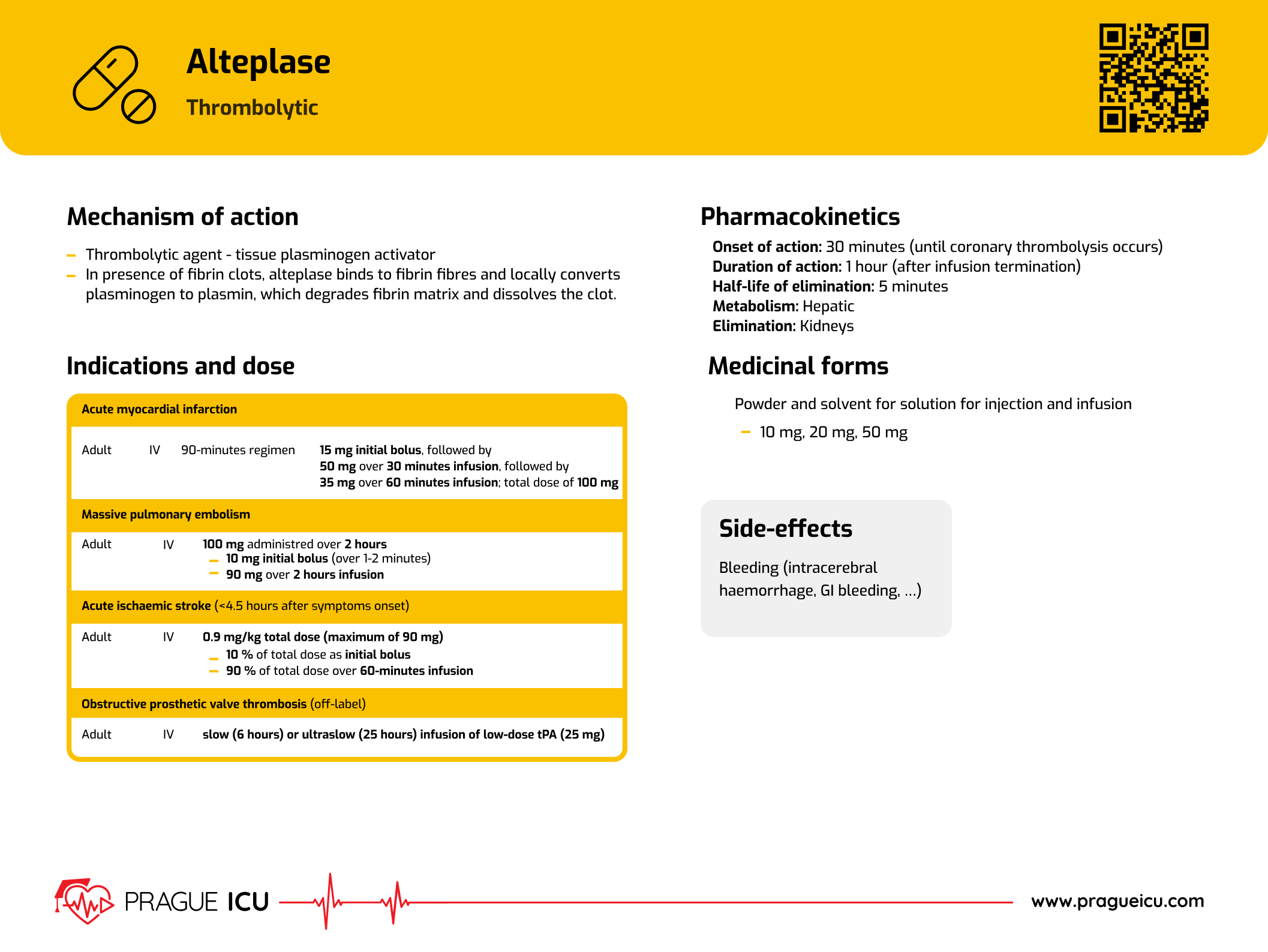
Alteplase (t-PA) (Actilyse)
Mechanism of action
Thrombolytic agent.
In presence of fibrin clots, alteplase binds to fibrin fibres and locally converts plasminogen to plasmin, which degrades fibrin matrix and dissolves the clot.
Indications and dose

Pharmacokinetics
Onset of action: 30 minutes (until coronary thrombolysis occurs)
Duration of action: 1 hour (after infusion termination)
Half-life of elimination: 5 minutes
Metabolism: Hepatic
Elimination: Kidneys
Medicinal forms
Powder and solvent for solution for injection and infusion – 10 mg, 20 mg, 50 mg
Side-effects
Bleeding (intracerebral haemorrhage, GI bleeding, …)
References





